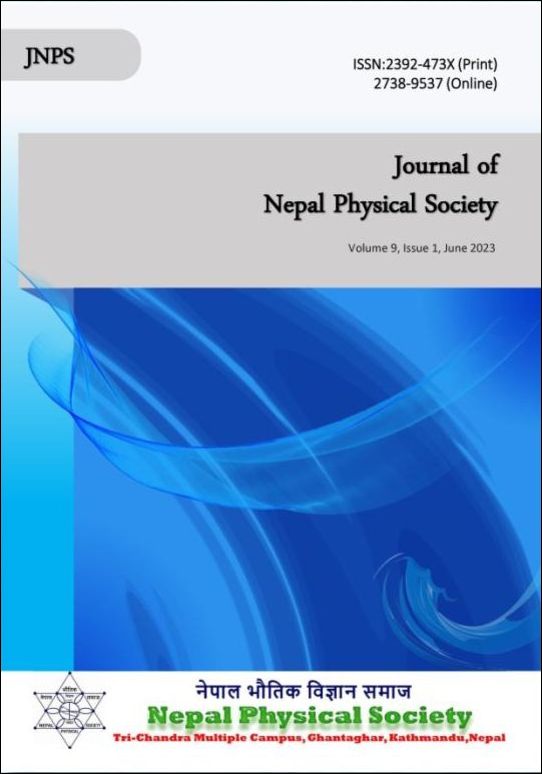Responses of Total Electron Content to Solar Flares over Low and Mid-Latitude Regions during Sun Halo Day
DOI:
https://doi.org/10.3126/jnphyssoc.v9i1.57543Keywords:
Ionospheric Total Electron Content, TEC variations, Sun halo, Solar flares, Solar wind parametersAbstract
The responses of total electron content (TEC) to solar flares over low- and mid-latitude regions during the sun halo days were investigated. The research is based on GPS data obtained from Bangalore (13.02117°N, 77.57038°E) on May 24, 2021; Cape Town (-33.918861°N, 18.423300°E) on October 26, 2020; and North Dakota (46.55756°N, -96.472300°E) on December 27, 2021, during the solar halo days. The results of this study demonstrate that the values of TEC increased at Bangalore and Cape Town stations during solar halo days as compared to other days. However, over the North Dakota station, TEC during the sun halo day was greater than that on the days before and after the halo day from around 19:00 UT to 23:59 UT hours. During the sun halo over Bangalore and Cape Town stations, positive relative changes in TEC prevail, suggesting that the action of the interplanetary electric field, the prompt penetration electric field, and the disturbance dynamo electric field lead to higher TEC values. However, during the sun halo over North Dakota station, negative relative changes in TEC prevail, which might be related to the consequence that low solar activity with no earth’s field disturbances (a positive Dst) leads to lower ionospheric TEC values. Stations that have greater relative changes in TEC have shown greater power spectrum and global wave spectrum energy. Cape Town has a greater relative change in TEC, a greater power spectrum, and a larger global wave spectrum than Bangalore and North Dakota stations. The values of TEC over three stations are different due to the latitudinal and longitudinal differences in addition to the universal time effects. Finally, solar flares have a major influence on ionosphere electrodynamics, and the upward drift velocity of ionospheres at the low latitude station is more strongly influenced by solar flares due to the effects of the ExB drifts, which induce TEC disturbances during the halo days over the suggested stations.
Downloads
Downloads
Published
How to Cite
Issue
Section
License
All right reserved. No part of this Journal may be reproduced in any form or by any electronic or mechanical means, including information storage and retrieval system, without permission in writing from the publisher, except by a reviewer who may quote brief passage in a review. The views and interpretation in this journal are those of author(s) and they are not attributable to the NPS.




